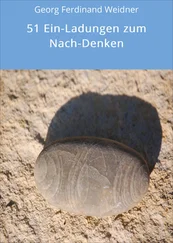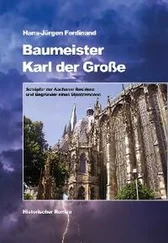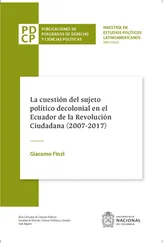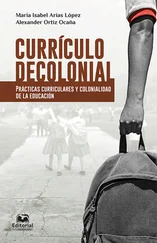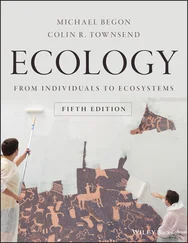Principles of colonial inhabitation: geography, exploitation of nature, and othercide
Colonial inhabitation contains three structural principles clearly stated in the deeds of the Compagnie de Saint-Christophe. First, colonial inhabitation is geographical in at least two ways. It is geographical in that it is located within the geography of the Earth, “at the entrance to Peru, from the eleventh to the eighteenth degree of the equinoctial line.” It has a determined space, a designated location, an enclosure. On the other hand, colonial inhabitation is geographically subordinate to another location, another space. It is important that goods will be produced from these islands and that they will be “brought to Le Havre to the exclusion of all others.” The meaning of this exclusivity of trade, laid down as a principle – the principle of exclusivity – is not exhausted in its economic understanding. Colonial inhabitation is thought to be subordinate to another kind of inhabiting, mainland inhabitation, which is itself thought to be the true form of inhabiting. This means that the inhabitation of the Caribbean islands was conceived of only on the condition that they were geographical subordinate to and ontologically dependent upon European mainland inhabitation.
The second principle of colonial inhabitation is based upon the exploitation of the land and the nature of these islands . This is clearly expressed in this excerpt from Richelieu’s 1626 commission to the colonists d’Esnambuc and Le Roissey:
… they [d’Esnambuc and Le Roissey] have seen and recognized that the air is very mild and temperate, and the aforementioned lands are fertile and highly profitable, from which it is possible to derive a quantity of useful commodities for the maintenance of human life [ la vie des hommes ]; they have even learned from the Indians who inhabit the aforementioned islands that there are gold and silver mines, which would have given them the idea rendering the aforementioned islands inhabited by a large number of Frenchmen, in order to convert their inhabitants to the Catholic, apostolic, Roman religion …. 6
Far from being just about the “maintenance of human life,” the purpose of colonial inhabitation was the commercial exploitation of the land. It was the possibility of extracting products for the purposes of enrichment that “gave the idea” of rendering the island inhabited. It assumes this intensively exploitative relationship to nature and non-humans.
Finally, the third principle of colonial inhabitation is othercide , meaning the refusal of the possibility of inhabiting the Earth in the presence of an other, of a person who is different from a “self” [ moi ] in their appearance, their social affiliations, or their beliefs. Colonial inhabitation is not, however, inhabiting alone. By populating these islands “which are not possessed by Christian princes,” the colonial inhabitant recognizes those other European princes and nations with whom the Earth is shared, based on the “evidence” that the Earth belongs to Christians. It was on the basis of this presupposed evidence that, in his papal bull of May 4th, 1493, Pope Alexander VI reaffirmed the principle that the Earth belongs to Christians and worked out a partition of the islands and the new continent between the king and queen of Castile: Ferdinand and Isabella. 7This same recognition of the Christian other within colonial inhabitation was reaffirmed when these new lands were shared with other Christians according to the amity lines . Therefore Richelieu decides that the capture of the Antilles is legitimate because these islands are beyond the amity lines. These actions posit inhabitation as being necessarily an inhabiting with the other Christian, an other with whom they agree to share the Earth, and with whom they agree to disagree, to wage war with or against. 8
There is an obvious contradiction within colonial inhabitation regarding non-Christians. It is a question of rendering these islands inhabited while recognizing that there are already inhabitants there. Likewise, Pope Alexander VI, while pointing to the existence of “many nations [that] inhabit these countries living in peace,” “gives” and “concedes” these lands, as if they were uninhabited. If Europeans made treaties together and signed their deeds, which created Caribbean operating companies as if these islands were virgin, they nonetheless knew that there were people there. This paradoxical relationship is explicit in the deed that created the Compagnie de Saint-Christophe. The first moment that the other appears is when it is said specifically that this other will be reduced to the same, meaning the other will be stripped of all the qualities that make the other different from a self. It is a matter of rendering these islands inhabited and populated “… for the purpose of instructing the inhabitants of said islands in the Catholic, apostolic, and Roman religion …” The emergence of the other is only a rope with which this other can be drawn back to a known us, towards the same European. The other appears only as matter that can be reduced to another “way of the Self [ manière du Moi ],” to recall the expression of the philosopher Emmanuel Levinas. 9This dialectic, through which the other is recognized in that they will no longer be other, is the principal ontological violence of colonial inhabitation that consecrates the impossibility of inhabitation with the other. More than the eclipse of the other that Enrique Dussel has analyzed, colonization denies otherness and constitutes an enterprise of making everything the same, a reduction to the Same , rendering colonial inhabitation an inhabiting-without-the-other. 10
Foundations of colonial inhabitation: land grabs, massacres, and land clearing
Inhabiting is not self-evident, hence the explicit precision in the deed creating the Compagnie de Saint-Christophe, where it is a question of “ rendering these islands inhabited,” so that it is this doing , in the sense of this acting, that makes inhabitation possible. The acts that colonial man uses to establish his inhabitation constitute the foundations of colonial inhabitation. Three main acts consecrate the principial violence of colonial inhabitation. The first is land grabbing . Colonial inhabitation presupposes the obvious legitimacy of the appropriation of these islands by European colonists and the use of any force necessary to carry out this project. Let us remember that the Amerindians did not have the concept of private ownership of the land. 11This usurpation is accompanied by a set of symbolic gestures directed at the same Europeans. For example, the first act of Christopher Columbus when he arrived in Guanahani in 1492 was to rename the island San Salvador and to become its viceroy and governor. This baptism of the island and his self-declaration as governor were explicitly addressed to the members of his expedition and refer to the collective imaginary of the Spanish Crown. Likewise, in the deed of association for the Compagnie de Saint-Christophe, it is specified that it is a matter of a “faithful association between Us .” When du Plessis and de L’Olive arrived in Martinique with the intention of colonizing it, their first act was to plant the cross symbolizing that this land had been taken. 12
The second act founding colonial inhabitation is land clearing . The French “felled” the woods. Far from being merely a circumstance of the French colonization of the Caribbean, cutting down the forests was a condition for inhabiting it. It was necessary to “kill” the woods for colonial inhabitation to be possible, so that these islands can be “inhabited.” Clearing the land was a very difficult task for the first colonists of Saint-Christophe because of their lack of both experience and tools. 13Du Tertre recounts that, when the land was cleared, it released “poisonous vapours” that caused a disease commonly known as coup de barre or sudden fatigue, which contributed to a high mortality rate among enlisted men. 14Myriam Cottias shows that in the Antilles, between 1671 and 1771, recruits had a mortality rate of 25 percent per year. 15Of course, the French colonists were not the only ones to cut down trees. The Amerindians also cut down trees in order to carry out their own agriculture. The difference is that colonization establishes the following relationship: to inhabit is to clear the land, to inhabit is to cut down trees . Colonial inhabitation only begins from the moment that the tree is felled .
Читать дальше


